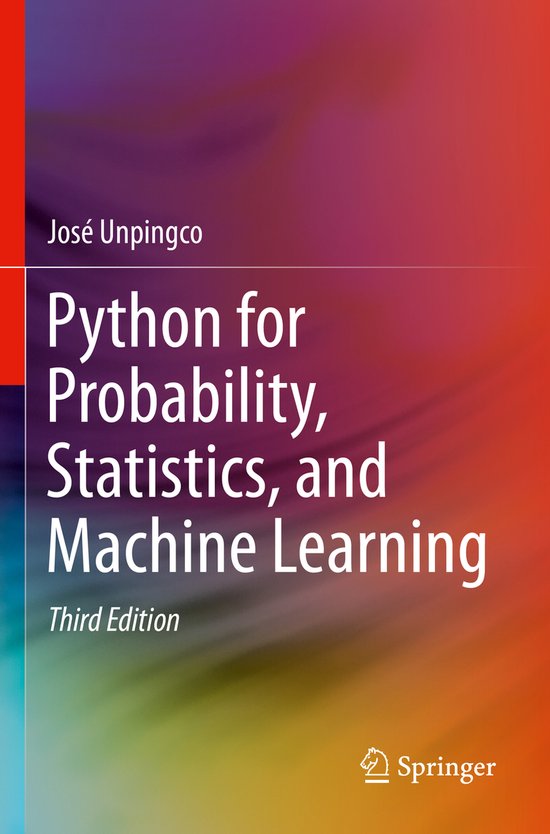
Boek
Python for Probability, Statistics, and Machine Learning
Huidige prijs op bol.com (Nederland)

Boek
Huidige prijs op bol.com (Nederland)
Ontvang een e-mail bij een prijsdaling tot onder je gewenste prijs.
Je ontvangt een e-mail wanneer de prijs daalt.
We tracken dagelijks de prijsontwikkeling van dit product op bol.com (Nederland).

Using a novel integration of mathematics and Python codes, this book illustrates the fundamental concepts that link probability, statistics, and machine learning, so that the reader can not only employ statistical and machine learning models using modern Python modules, but also understand their relative strengths and weaknesses.
Using a novel integration of mathematics and Python codes, this book illustrates the fundamental concepts that link probability, statistics, and machine learning, so that the reader can not only employ statistical and machine learning models using modern Python modules, but also understand their relative strengths and weaknesses. To clearly connect theoretical concepts to practical implementations, the author provides many worked-out examples along with "Programming Tips" that encourage the reader to write quality Python code. The entire text, including all the figures and numerical results, is reproducible using the Python codes provided, thus enabling readers to follow along by experimenting with the same code on their own computers.
Modern Python modules like Pandas, Sympy, Scikit-learn, Statsmodels, Scipy, Xarray, Tensorflow, and Keras are used to implement and visualize important machine learning concepts like the bias/variance trade-off, cross-validation, interpretability, and regularization. Many abstract mathematical ideas, such as modes of convergence in probability, are explained and illustrated with concrete numerical examples. This book is suitable for anyone with undergraduate-level experience with probability, statistics, or machine learning and with rudimentary knowledge of Python programming.· Features a novel combination of modern Python implementations and underlying mathematics to illustrate and visualize the foundational ideas of probability, statistics, and machine learning;
· Includes meticulously worked-out numerical examples, all reproducible using the Python code provided in the text, that compute and visualize statistical and machine learning models thus enabling the reader to not only implement these models but understand their inherent trade-offs;
· Utilizes modern Python modules such as Statsmodels, Tensorflow, Keras, Sympy, and Scikit-learn, along with embedded "Programming Tips" to encourage readers to develop quality Python codes that implement and illustrate practical concepts.Using a novel integration of mathematics and Python codes, this book illustrates the fundamental concepts that link probability, statistics, and machine learning, so that the reader can not only employ statistical and machine learning models using modern Python modules, but also understand their relative strengths and weaknesses. To clearly connect theoretical concepts to practical implementations, the author provides many worked-out examples along with "Programming Tips" that encourage the reader to write quality Python code. The entire text, including all the figures and numerical results, is reproducible using the Python codes provided, thus enabling readers to follow along by experimenting with the same code on their own computers.
Modern Python modules like Pandas, Sympy, Scikit-learn, Statsmodels, Scipy, Xarray, Tensorflow, and Keras are used to implement and visualize important machine learning concepts like the bias/variance trade-off, cross-validation, interpretability, and regularization. Many abstract mathematical ideas, such as modes of convergence in probability, are explained and illustrated with concrete numerical examples. This book is suitable for anyone with undergraduate-level experience with probability, statistics, or machine learning and with rudimentary knowledge of Python programming.
Bekijk ook eens deze gerelateerde producten.